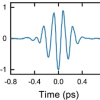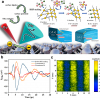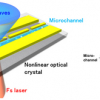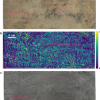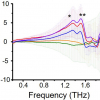
A team of physicists has created a new type of optical transistor—a working THz amplifier—using graphene and a high-temperature semiconductor. The physics behind the simple amplifier replies on the properties of graphene, which is transparent and is not sensitive to light and whose electrons have no mass. It is made up of two layers of graphene and a superconductor, which trap the graphene mass-less electrons between them, like a sandwich. The device is then connected to a power source. When the THz radiation hits the graphene outer layer, the trapped particles inside attach themselves to the outgoing waves giving them more power and energy than they arrived with.
Professor Fedor Kusmartsev, of the University of Loughborough’s Department of Physics, said: “The device has a very simple structure, consisting of two layers of graphene and superconductor, forming a sandwich. As the THz light falls on the sandwich it is reflected, like a mirror. The main point is that there will be more light reflected than fell on the device. It works because external energy is supplied by a battery or by light that hits the surface from other higher frequencies in the electromagnetic spectrum. The THz photons are transformed by the graphene into massless electrons, which, in turn, are transformed back into reflected, energised, THz photons. Due to such a transformation the THz photons take energy from the graphene—or from the battery—and the weak THz signals are amplified.”
The research was carried out by researchers from Loughborough University, in the UK; the Center for Theoretical Physics of Complex Systems, in Korea; the Micro/Nano Fabrication Laboratory Microsystem and THz Research Center, in China and the AV Rzhanov Institute of Semiconductor Physics, in Russia. It has been accepted for publication in Physical Review Letters.
The team is continuing to develop the device and hopes to have prototypes ready for testing soon. Professor Kusmartsev said they hope to have a working amplifier ready for commercialisation in about a year. He added that such a device would vastly improve current technology and allow scientists to reveal more about the human brain




